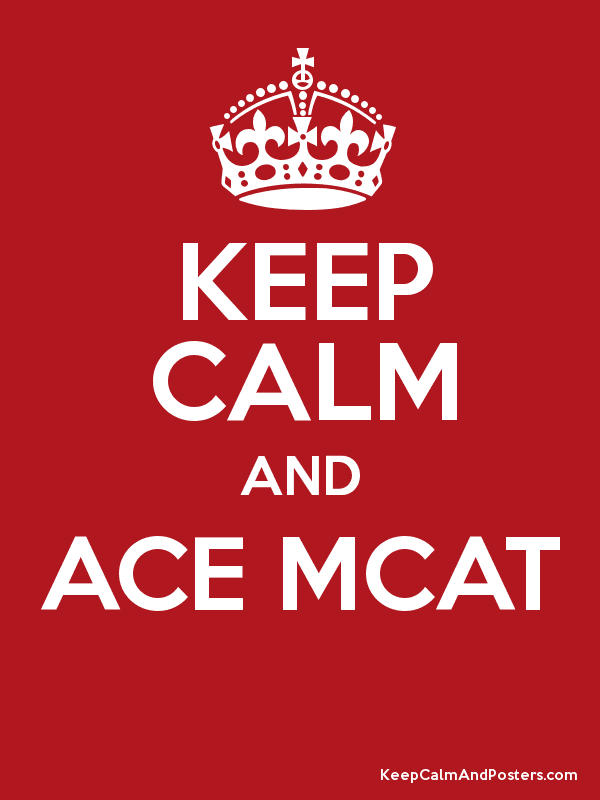Cracking the MCAT

By: Muaaz Masood
Daunting does not begin to describe how premedical students view the Medical College Admissions Test (MCAT), which is required by all 126 medical schools in the United States.
The MCAT, which has been a crucial component to the medical school admissions process for over 80 years, is a standardized, timed, multiple-choice format test. It is dubbed the most difficult of any other graduate school entrance examinations, including the Law School Admissions Test (LSAT), Graduate Management Admissions Test (GMAT) and the Graduate Record Examination (GRE), to name a few. At five and a half hours in length, it is also the longest graduate school entrance exam.
What makes the MCAT notorious for its difficulty and the cause of many premedical students’ anxiety? To answer this question, we must first delve into how the MCAT is structured.
The test consists of three sections: Physical Sciences, Verbal Reasoning, and Biological Sciences. An optional Trial Section, which contains experimental questions for future MCAT examinations and does not count towards your score, may also be taken at the end.
The science sections, Physical Sciences and Biological Sciences, are structured similarly. Both sections contain a total of 52 questions–seven passage-based question sets and 13 independent questions, and each science section is given a 70 minute time limit.
The Verbal Reasoning portion is somewhat different. Forty questions are asked based on seven passages,that are approximately 600 words each. A 60 minute time limit is given for this secti.
Each sections is scored out of 15, with a total sum score of 45 being the perfect score. The average MCAT score of students accepted into U.S. medical schools in 2012 was 31.2, according to the Association of American Medical Colleges.
So what is it about the MCAT that makes it so challenging? There are several factors which contribute to the overall difficulty of the exam.
Original source: [http://www.keepcalmandposters.com/poster/keep-calm-and-ace-mcat-]
Time is a crucial component during the MCAT. The time allotted for each section may seem generous, but when taking into account the time it takes to read the passages and questions, to recall information from memory and to choose the correct answer, it is easy to see how a time limit adds to the difficulty of the test.
It is best to spend no more than 1 minute and 20 seconds per question. Mastering the 80-second suggested pace requires lots of practice.
Another issue many students face is the immense amount of content covered on the MCAT. The exam requires introductory knowledge of physics, biology, general chemistry, organic chemistry and verbal reasoning—approximately two to three college years’ worth of information.
Although there is a fair amount of content that students must know, the MCAT does not simply test whether or not facts and concepts can be recalled. Rather, the MCAT presents ideas within a context often unfamiliar to most students.
For example, the MCAT may test a physics’ concept of electromagnetism by presenting this concept in a passage about the workings of an MRI machine. This method of presentation requires the examinee to not only be familiar with an idea, but also show his or her ability to successfully apply the idea in an unfamiliar situation—a skill that, again, must be practiced.
After looking at what makes the MCAT so difficult, how should anxious premedical students go about preparing for this test?
Fortunately, there are several options available. A popular choice for many students is to enroll in a commercial test preparation course, such as those offered by The Princeton Review, Kaplan, Examkrackers, Berkeley Review, etc. While enrolling in a prep course is expensive, averaging approximately $2,000, the course does provide students lecture-style instruction that covers frequently tested material. Furthermore, prep courses provide a plethora of resources including prep books, videos, practice MCAT tests, and more. Many students prefer these courses because they are an excellent way to keep on track with a defined study schedule. Students enrolled in prep course, also benefit from having an instructor to ask questions and explain misconceptions.
There are other ways to prepare, such as independent study. People who believe that they can form and follow their own study schedule often purchase test prep materials from friends or third-party sellers. The choice simply depends on you—your course load, your extracurricular activities, your study ethic, and your level of determination. Both test prep courses as well as independent studying are equally as effective in achieving a good score as long as a study schedule is regularly followed.
One of the costliest mistakes a student can make is to procrastinate studying. Remember, the MCAT requires four to five months of review and practice on average. It is not a test for which you can afford to procrastinate.
The good news is that the MCAT is meant to be a fair assessment, and with sufficient hard work, motivation and lots of practice, a competitive score on the MCAT can be achieved.
It is key to remain on track whilst studying for the MCAT, it is also important to not overwork yourself. Taking small breaks from studying and going for a run or socializing with friends, for instance, have been proven to be effective in reenergizing and refocusing your mind.
While the MCAT is an arduous test, receiving a competitive score is highly rewarding. Remember, the MCAT is one of the last and most important steps in actualizing your dream of becoming a physician.

